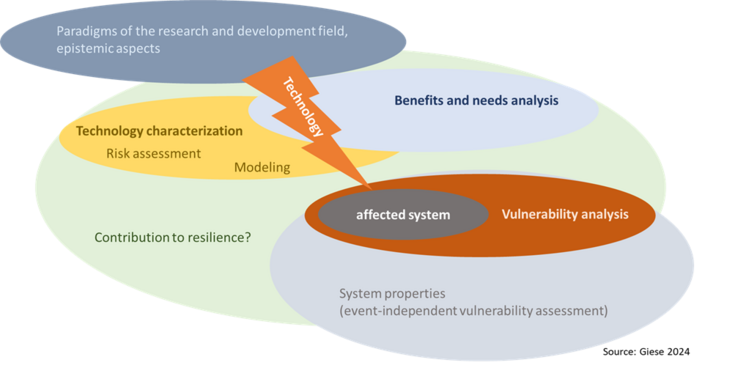Risk- and technology assessment in the field of bio- and nanotechnology
The work of the Institute for Safety and Risk Sciences in the field of bio- and nanotechnologies aims to identify the potential benefits and possible risks associated with the relevant technologies at the earliest possible stage of development in order to create a framework that enables environmentally compatible development that also supports social goals. The results of our work are incorporated into recommendations for the governance and regulation of technologies and can also lead to specific design recommendations.
Our expertise is interdisciplinary. In addition to methods of technology assessment, ecology, toxicology, as well as innovation and sustainability research, we use approaches to investigate socio-ecological systems. In particular, we investigate how vulnerable or resilient these systems are and which characteristics play a role in this.
In the early stages of technology development and innovation processes, application contexts and affected systems are usually still unknown, but key features of the technology are already emerging. In such cases, a prospective technology assessment is based on the use of early indicators for the potential benefits and risks of possible applications. Technology characterization makes use of this approach and represents a suitable method in particular for new technologies with applications that are open to the environment or deliberately influence the environment. The aim of a prospective technology characterization is to provide a basis for decision-making within the framework of the precautionary principle.
In order to be able to assess the technical impact, not only the technology itself but also the systems likely to be affected by it (in terms of organisms, ecosystems, socio-ecological systems) must be examined. Technical action in the awareness of global carrying capacities is dependent on an understanding of the vulnerabilities of ecological, socio-ecological and socio-economic systems. Vulnerability analysis can be seen as the counterpart to technology characterization. It is used to analyze the systems potentially affected by the use of technology. We have further developed vulnerability analysis for applications in the field of biotechnology and genetic engineering. Our approach is currently being expanded to include criteria that go beyond a pure consideration of environmental impacts and enable at least a rudimentary assessment of social consequences.
Contact: Bernd Giese

